Behind the Build: Foursquare's WordPress Migration
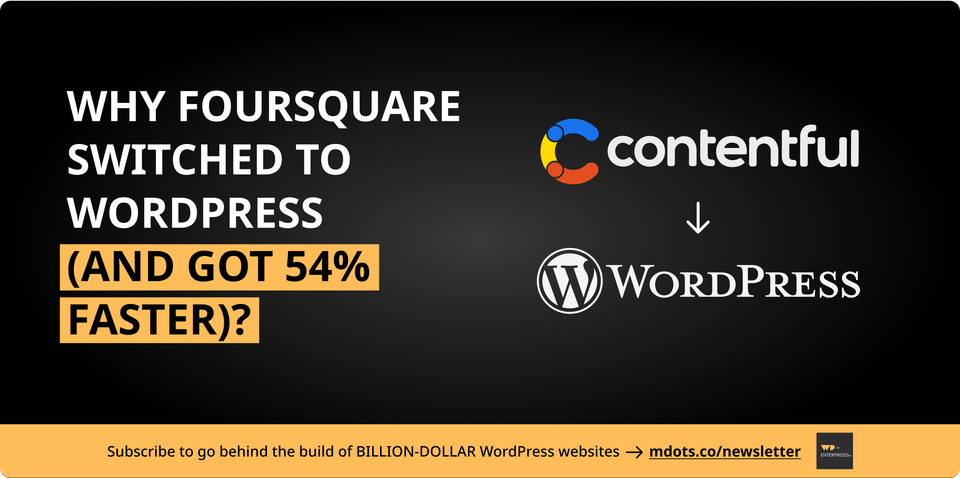
Welcome to WP for ENTERPRISES, where we go behind the scenes of BILLION-DOLLAR WordPress websites.
In this issue, you'll discover:
- What drove Foursquare to leave Contentful behind.
- Why WordPress was their platform of choice.
- 5 strategies that powered their 12-week migration.
- Inside Foursquare's new WordPress tech stack.
- Impressive results from their platform switch.
HOW FOURSQUARE REBUILT THEIR SITE ON WORDPRESS (AND MADE IT 54% FASTER)
In 2022, we helped Foursquare migrate its website from Contentful to WordPress in just 12 weeks. Here’s what changed:
- Cut page load time by 54% (from 7 seconds to 3.1)
- Boosted monthly traffic by 20%
- Got more keywords to rank on page one of Google
- Empowered their marketing team to publish without devs
- Avoided downtime
- Kept all URLs intact (no SEO penalty)
- Killed expensive CMS licensing fees
That’s the happy ending.
Now let’s rewind a bit and see how we got there.

A QUICK BACKSTORY
You probably remember Foursquare as that fun app you used to check in at cafes and restaurants.
But the company’s grown up a lot.
Today, they’re a billion-dollar geospatial tech company—powering maps, apps, and data tools across the globe.
Think enterprise-level location data for developers, marketers, and brands.
In mid-2022, their team reached out to us at Multidots.
They wanted to rethink their CMS—not just redesign the site, but truly upgrade how their team worked.
Faster publishing. Lower costs. More control.
They were using a headless CMS called Contentful, and it wasn’t working the way they hoped.
WAIT—WHAT’S A HEADLESS CMS?
Great question.
A headless CMS is a content system that separates the backend (where you manage content) from the frontend (what the user sees).
It gives you flexibility—especially for multi-platform experiences (like websites, apps, smart TVs).
Sounds amazing, right?
It is... if you're running a complex digital product with multiple frontends.
But for most marketing websites, it’s often overkill.
You lose some of the “what-you-see-is-what-you-get” editing.
You end up needing developers for simple changes.
And the cost? Yikes.
Contentful's enterprise plans can range from $50K to over $200K a year.
(And that’s just licensing. Add dev time and it gets spicy.)
5 STRATEGIES THAT POWERED FOURSQUARE'S MIGRATION
Now let's see the five approaches that made this ambitious migration a success.
Strategy #1: Domain Integration via Reverse Proxy
One of the biggest challenges was integrating WordPress into Foursquare's existing domain architecture without disrupting their application endpoints and services.
The solution? A sophisticated reverse proxy implementation using Fastly.
This approach:
- Routed content requests to WordPress while app requests went to application servers.
- Maintained a unified foursquare.com domain experience.
- Enhanced global content delivery through Fastly's edge network.
- Preserved existing APIs while introducing WordPress as the content engine.
The reverse proxy layer acted as an intelligent traffic controller, ensuring that the WordPress migration was invisible to end-users while dramatically improving performance.

Strategy #2: Custom Gutenberg Block Development
To preserve Foursquare's unique brand storytelling capabilities, my team at Multidots built custom Gutenberg blocks specifically tailored to their needs.
These custom blocks included:
- Animated info blocks for geospatial data visualization.
- Flexible card layouts with multiple design variations.
- Interactive map components to showcase location technology.
- Custom callout sections with brand-consistent styling.
By extending WordPress's native block editor, Foursquare could maintain their distinctive content presentation while giving editors a vastly improved authoring experience.

Strategy #3: Multi-System Integration Hub
Foursquare needed to maintain connections with various third-party platforms. Rather than treating these as separate systems, my team turned WordPress into a central integration hub.
Key integrations included:
- Marketo forms for lead capture directly manageable in WordPress.
- Greenhouse job board API for the careers section.
- Internal communication hooks to Slack and Discord.
- Analytics and tracking systems for marketing attribution.
This centralized approach eliminated silos between systems and gave content teams a unified dashboard to manage all aspects of the site.
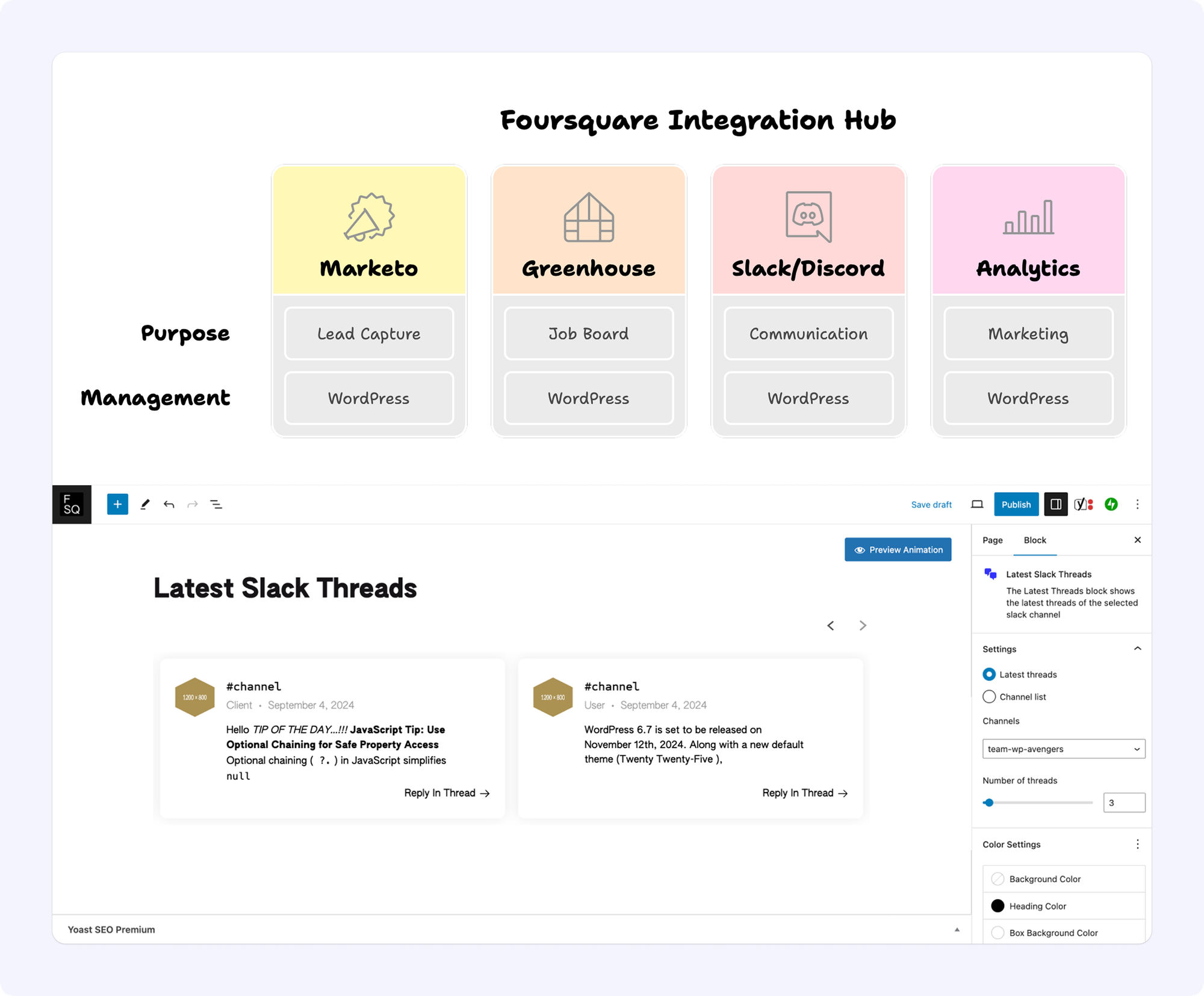
Strategy #4: Enhanced Editorial Workflow
My team implemented sophisticated workflow improvements to dramatically speed up Foursquare's publishing process.
These workflow enhancements included:
- Public preview links that didn't require login credentials.
- Scheduled content publishing for marketing campaigns.
- Approval routing with notification systems.
- Version history and content comparison tools.
These features transformed content approval from a multi-day process to a streamlined operation, allowing Foursquare to respond faster to market opportunities.
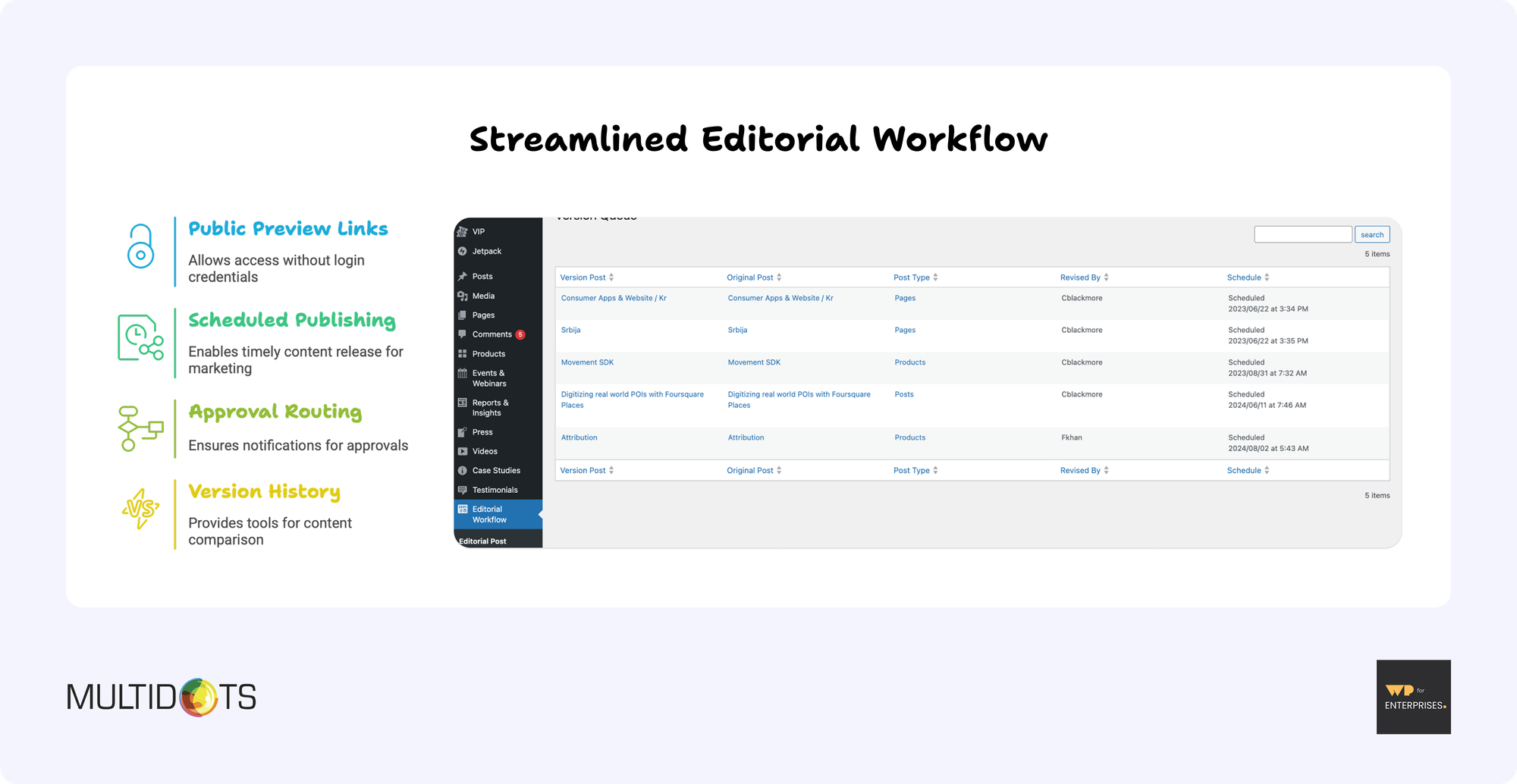
Strategy #5: Global Performance Optimization
To address the slow page speeds, my team built a multi-layered performance strategy:
- Fastly CDN implementation for global edge caching.
- Image optimization and lazy loading.
- Critical CSS path optimization.
- Server-side caching with object caching.
- Database query optimization.
This comprehensive approach reduced average page load times from 7.0 seconds to just 3.1 seconds—a 54% improvement that dramatically enhanced user experience.
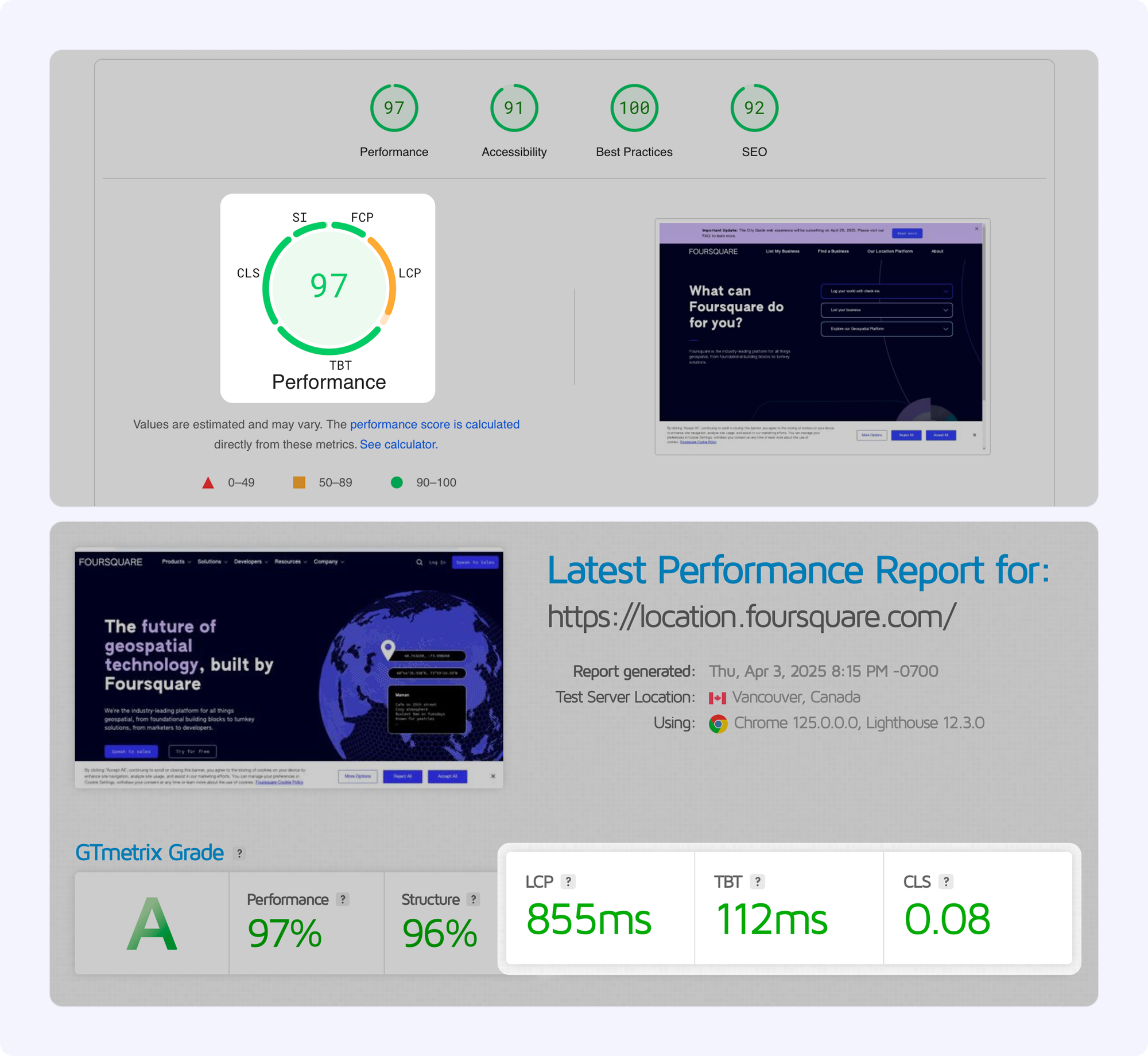
INSIDE THE FOURSQUARE'S WORDPRESS TECH STACK
The migration completely transformed Foursquare's technical foundation:
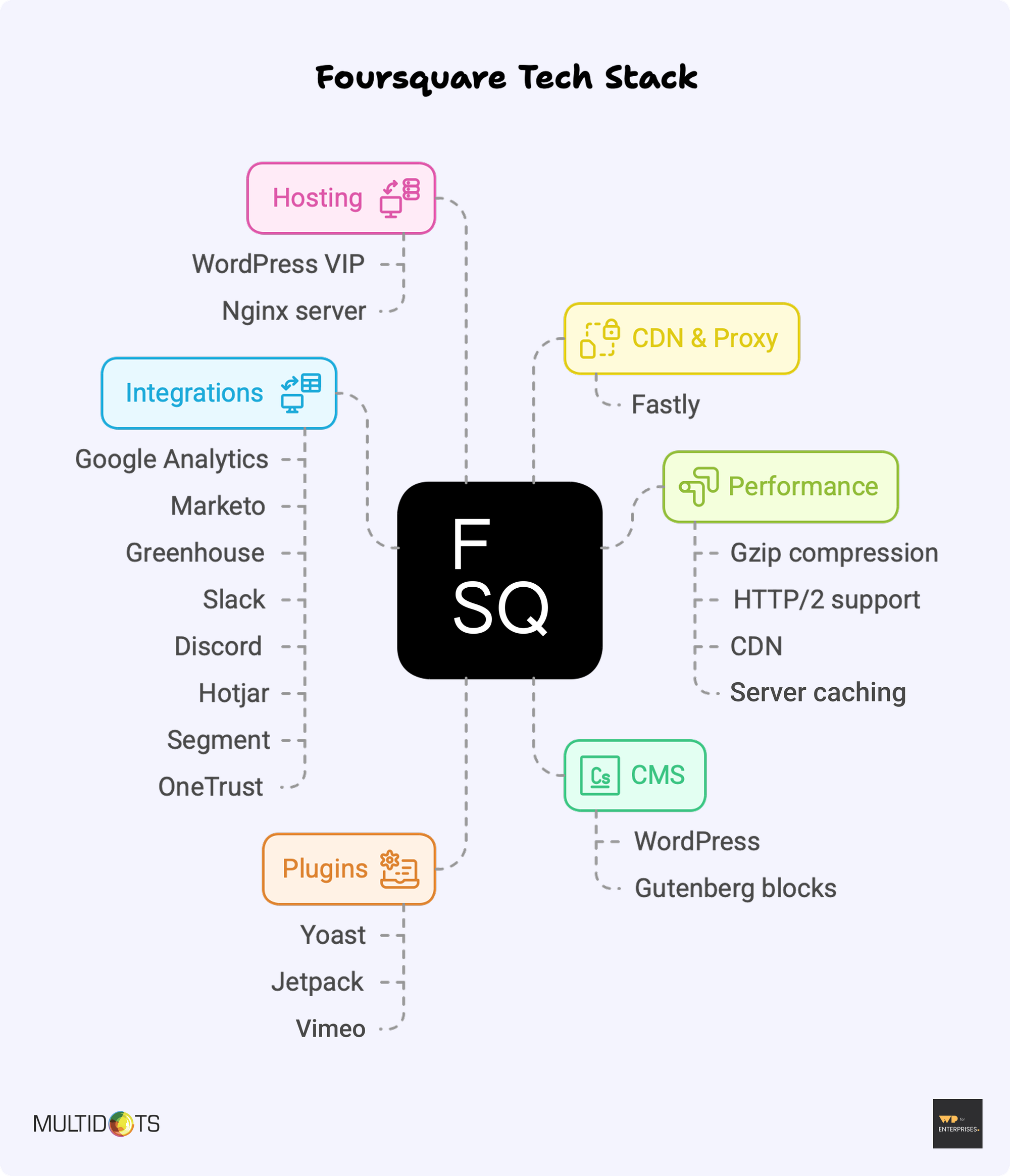
FINAL THOUGHTS
Foursquare is a billion-dollar company.
They didn’t pick WordPress because it’s trendy.
They picked it because it worked better for their team, their goals, and their budget.
Here’s what you can learn from them:
- Use a reverse proxy to avoid disrupting your backend
- Custom blocks = brand consistency + speed
- WordPress can be your marketing control tower
- Editorial workflow matters more than you think
- Speed is not optional—it’s a game changer
And most of all:
You don’t need to spend $200K a year on a CMS.
You just need the right setup—and the right team to build it.
(That’s us, by the way.)
IN CASE YOU MISSED IT
By the way, in the previous issue, I shared "The 15-Point Hosting Checklist I Give To Every Enterprise Client". Check out this link.
In this issue, you'll discover:
- What enterprise WordPress hosting is.
- Why it’s such a big deal.
- And what you should look for in an enterprise host.
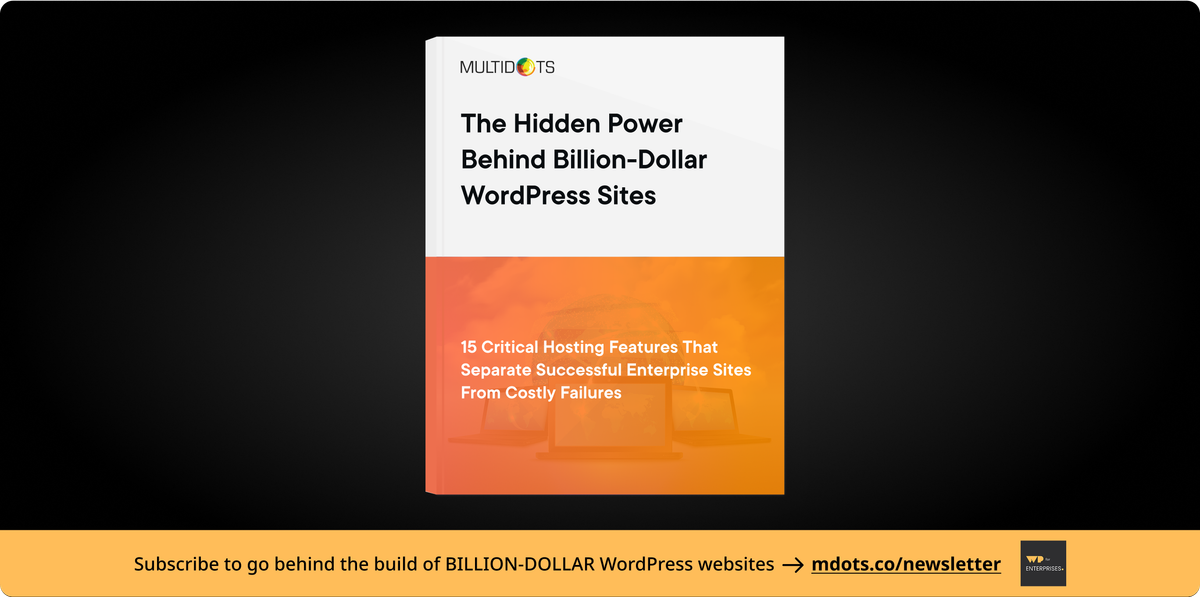
👋 Until next time, Anil | CEO and Co-Founder → Multidots, Multicollab & Dotstore.
P.S. I also write about personal growth and agency growth.

WP for ENTERPRISES is brought to you by Multidots, an enterprise WordPress web agency that’s been empowering big enterprises to scale and succeed with WordPress.

Whenever you're ready (no pressure), there are four ways we can help:
#1: Enterprise WordPress consulting – Think of us as your WordPress GPS. We’ll get you where you need to go.
#2: Migrate your website to WordPress – No stress, no mess—just a smooth ride to the WP world.
#3: Designing and building a new site – Your dream site, minus the nightmares.
#4: Optimizing and maintaining your site – Because nobody likes a slow website (or a hangry one).
📆 Book a quick, free call—no hassle, no commitment, just solutions that work for you.
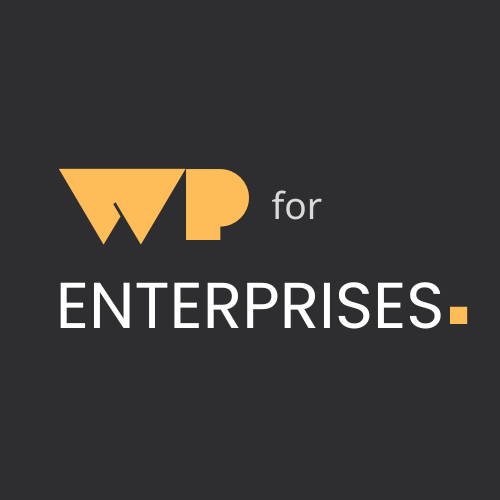

Member discussion